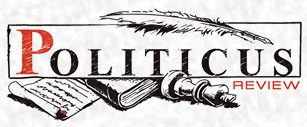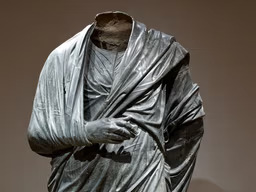The Cleveland Museum of Art will return a headless Greco-Roman bronze statue that was pillaged from the ancient city of Bubon in south-central Turkey. The larger-than-life statue of a draped male figure, thought to be a philosopher based on the pose, will remain on view in Cleveland for a yet-to-be-confirmed period of time before being transferred to Turkey. (The sculpture was previously believed to depict the Roman emperor Marcus Aurelius, and date from the final decades of the 2nd century.)
In 2023, the Antiquities Tracking Unit of the Manhattan District Attorney’s office took possession of the bronze statue, although without removing it from the Cleveland Museum of Art, beginning a series of discussions—and a lawsuit over the $20m work—that eventually led to last week’s announcement by the museum that the piece would be returned. “The New York District Attorney approached us with a claim and evidence that we felt was not utterly persuasive,” says William M. Griswold, the director of the Cleveland Museum of Art, adding that “we filed a legal challenge to the DA’s assertion that it had been stolen, subsequently requesting a number of scientific tests to establish once and for all the basis of Turkey’s claim”.
Turkish authorities permitted officials from the Cleveland Museum of Art to have access to the site, where it collected samples of other bronzes, as well as soil samples, since a small amount of Turkish soil was found within the statue, to determine if there were a match. Museum officials also made moulds of the feet of the sculpture, taking those moulds to the site in Bubon “where we could try to set them up on top of the various stone bases, which have cuttings meant to hold bronze statues in place by means of lead plugs”, says Seth Pevnick, the museum’s curator of Greek and Roman art. “So, we were able to compare the physical models of our statue’s feet to those cuttings to see where they best fit. And then we also did a similar comparison by means of 3D photogrammetry.” Lead isotope analysis determined that there was a match.
It is not unusual that museums in the US, UK and Europe are found to have in their permanent collections objects that were improperly removed from one or another country. Just last year, the Cleveland Museum of Art agreed to send back to Libya a 2,200-year-old Ptolemaic statue that had been taken out of the African country in the Second World War during the British occupation, passing through various hands until it entered the private collection of a New York City couple who donated the piece to the Cleveland museum. The Manhattan District Attorney’s office has been instrumental in many such returns in the US. Since 2017, when the Antiquities Tracking Unit was established, more than 1,000 antiquities stolen from more than two dozen countries have been repatriated. A distinguishing feature of the present repatriation effort is the scientific testing that was done in order to prove that the bronze statue did, in fact, come from a shrine in Bubon.
Analysis of the bronze, lead and soil was conducted by Ernst Pernicka, the senior director and managing director of the Curt-Engelhorn-Zentrum Archäometrie gGmbH in Mannheim, Germany and an internationally renowned expert in the application of scientific techniques to archaeology and art history. Pernicka was the expert agreed upon by the museum, District Attorney’s Office and the Turkish government, and he conducted his research in Germany.
Key to the identification, Griswold says, was not the bronze but the lead plug, which is how statues of this era were secured to their bases. Peynick says that type of scientific analysis, while new for this statue, is part of a “well-established scientific procedure”.






